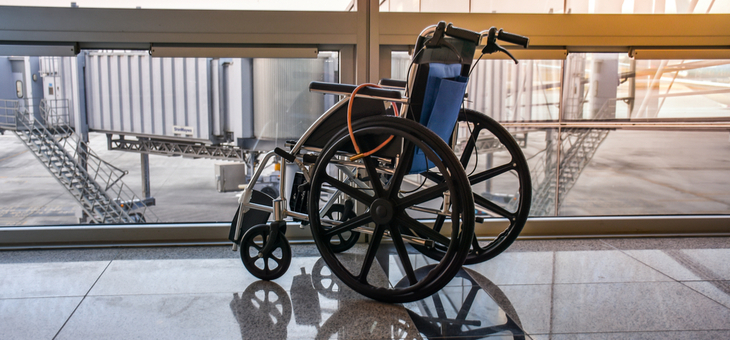Recently, a disability advocate was forced to leave her specially designed wheelchair on the ground so she could board her Qantas flight.
Qantas staff said the wheelchair was too big to fit in the plane’s hold.
“It was only discovered at check-in in Melbourne that her wheelchair was too large for the aircraft hold,” said the Qantas spokesperson.
Monica McGhie’s information had not been properly processed by the airline’s booking system, which meant the wheelchair stayed behind.
“Our staff at Melbourne were able to offer a solution and Ms McGhie was able to travel on to Canberra,” the spokesperson said. “We have contacted Ms McGhie to apologise and will be reviewing how this can be avoided in future.”
While flying with a disability may be difficult, it’s far from impossible. It just takes a little forward planning. Call your airline well in advance, to inform it of your, or your companion’s circumstances.
According to the Civil Aviation Safety Authority (CASA), travelling with a disability “requires careful planning, persuasive skills and occasionally, assertiveness. When you fly, know your needs and be prepared to describe them calmly and with confidence to someone who doesn’t.”
“Generally speaking, people with disability are often required to take additional steps to prepare for travel, which can be very time-consuming,” Samantha French, Senior Policy Officer for People With Disability Australia told Skyscanner.
“For example, a person travelling with a wheelchair will be required to phone the airline ahead of travel to provide additional details such as: weight and measurements of the wheelchair, if they are able to self-transfer on to the seat of the aircraft, if they are able to independently use the bathroom and eat or if they will need some assistance, if a person needs ‘meet-and-assist’ at the airport i.e. assistance to move through the airport including filling out paperwork, checking in, going through customs, and does the person need an aisle chair or hoist to transfer to the aircraft seat.”
The above situations may have been avoided with a follow-up call. So, call again much closer to your departure date, with a list of questions to make sure the airline, or cruise line, has the necessary procedures and precautions in place for your journey.
Anyone travelling with a guide dog may need to make additional preparations.
Guide Dog owners should inform the airline at the time of booking that they will be travelling with a Guide Dog and request a “Meet and Assist” service at departure and arrival if necessary, says Samantha McGill from Guide Dogs NSW.
“‘Meet and Assist’ is available at all airports. It is a service where staff assist people with disabilities to negotiate airports and ensure that the experience meets the individual needs of the person,” said Ms McGill.
Airlines and airports are legally bound to provide sufficient services for people with disability. Most airlines have detailed information about services available to assist a person with a disability. Services can include:
- assistance checking in and navigating the airport
- assistance filling out paperwork
- assistance with boarding an aircraft
- locating a seat on an aircraft
- transferring into an aircraft seat.
People with disabilities will undergo the same security screening as other members of the public, but are usually permitted to board an aircraft before other passengers. This is the perfect opportunity to speak with cabin crew to reiterate any special requests.
“Explain to the cabin crew exactly what they can do to help. Chances are they have just as much anxiety about transferring assistance and boarding as the passengers do. Cabin crew are more likely to be co-operative and happy when they are aware of what is needed and expected,” CASA advises.
Cabin crew should provide assistance with moving to and from a seat during boarding or disembarking. Staff can also open packages and identify food, help you move to and from the toilet, or load and retrieve carry-on items. However, they are not required to feed passengers, help them in the toilet, or lift and carry them.
Ms McGill emphasises that more planning may be required, but help is available for a person with a disability through all stages of the travelling process.
“There are no barriers to airport travel. There is assistance at every step of the journey as long as a person requests assistance in advance and can articulate their individual needs.”
Read more at CASA
Do you have a disability that makes travel difficult? Can you share any tips for our members?
Related articles:
How to make flying more comfortable
Flying with limited mobility
Airports failing older flyers

